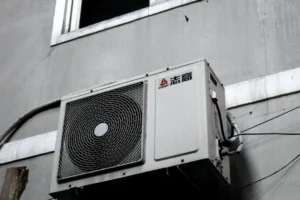Workplace safety stands out as a critical concern across high-risk industries where the potential for serious accidents looms large. From construction sites to manufacturing plants, proper safety training not only saves lives but also keeps businesses compliant with federal regulations. Understanding the specific OSHA training requirements that apply to different industrial settings can seem overwhelming, but breaking them down by industry makes the path to compliance much clearer.
Professional safety experts at Insite Training recommend regular reviews of OSHA standards as they apply to specific work environments. These reviews help safety managers identify gaps in existing programs and address potential compliance issues before they result in violations or workplace incidents. Many companies find that maintaining comprehensive training records provides the best defense during OSHA inspections.
Construction Industry Training Essentials
Construction sites present numerous hazards that demand specific training interventions. OSHA’s 29 CFR 1926 outlines mandatory training for workers exposed to fall hazards, those operating heavy machinery, and employees working in confined spaces. The standard requires documented training sessions that address site-specific dangers and proper protective equipment use.
Workers need refresher courses when job conditions change or when supervisors notice unsafe practices. Fall protection training deserves special attention since falls consistently rank among the leading causes of construction fatalities. Anyone working at heights must understand harness inspection, anchor point selection, and rescue procedures.
Scaffolding safety represents another critical training area for construction personnel. Workers need to recognize proper assembly techniques, load capacities, and fall prevention methods. OSHA requires competent person designation for scaffold oversight, creating another specialized training requirement that construction companies must address.
Manufacturing Safety Requirements
Manufacturing environments contain unique hazards ranging from dangerous machinery to hazardous chemicals. OSHA’s general industry standards (29 CFR 1910) mandate training on lockout/tagout procedures, machine guarding, and chemical safety. Workers must demonstrate competence in these areas before working independently.
Machine operator training deserves particular focus, as equipment-related injuries often result from inadequate preparation. Operators need instruction on emergency shutdown procedures, recognition of malfunction signs, and proper use of safety devices. Documentation must show hands-on demonstration of these skills, not just classroom instruction.
Chemical safety training must align with OSHA’s Hazard Communication Standard. This includes teaching workers how to read Safety Data Sheets, understand chemical labeling systems, and properly handle hazardous substances. Annual refresher training helps reinforce these critical safety practices in manufacturing settings.
Oil and Gas Industry Standards
Few industries face more severe safety risks than oil and gas extraction. OSHA requires specialized training for workers facing hydrogen sulfide exposure, those performing hot work, and employees involved in confined space entry. The volatile nature of these operations demands rigorous preparation and regular skill reinforcement.
Well control training stands as perhaps the most critical safety requirement in this industry. Workers must understand blowout prevention techniques, pressure monitoring protocols, and emergency response procedures. Companies must maintain detailed records of this training, including simulation exercises that test worker readiness.
Transportation safety training also plays a key role in oil field operations. Drivers hauling equipment or materials need specialized instruction beyond basic CDL requirements. This includes load securement techniques, hazardous materials handling, and fatigue management strategies specific to the demanding oil field environment.
Healthcare Sector Compliance
Healthcare facilities face unique OSHA training requirements focused on bloodborne pathogens, workplace violence prevention, and safe patient handling. The Bloodborne Pathogens Standard (29 CFR 1910.1030) mandates annual training for all workers with potential exposure to infectious materials.
This training must cover transmission prevention, exposure response procedures, and proper PPE use. Healthcare workers need hands-on practice with protective equipment and exposure control techniques. Training documentation must include employee participation verification and content outlines.
Workplace violence prevention training has gained increased attention from OSHA inspectors examining healthcare facilities. Staff members need instruction on recognizing warning signs, de-escalation techniques, and emergency response protocols. Regular drills help reinforce these skills in high-stress healthcare environments.
Warehouse and Distribution Requirements
The rapid growth of e-commerce has expanded warehouse operations nationwide, bringing heightened OSHA scrutiny to this sector. Powered industrial truck training stands as a primary requirement, covering forklift operation, pedestrian safety, and battery charging procedures. Operators need both classroom and practical evaluation every three years.
Material handling training reduces common warehouse injuries related to lifting, carrying, and stacking products. Workers need instruction on proper lifting techniques, load assessment procedures, and when to use mechanical assistance. This training should address specific items handled at each facility.
Loading dock safety represents another critical training area for warehouse personnel. Workers need to understand trailer restraint systems, dock leveler operation, and communication protocols with truck drivers. Falls from docks and crushing injuries between trailers and buildings remain persistent hazard sources requiring targeted training.
Common Compliance Mistakes
Safety professionals frequently observe companies making key mistakes in their OSHA training programs. The most common error involves failing to document training properly. OSHA inspectors request proof of training during site visits, and verbal assurances rarely satisfy compliance requirements.
Another frequent mistake involves generic training that doesn’t address site-specific hazards. Each workplace contains unique risk factors that standard training videos or online courses might not cover. Safety managers must supplement general training with facility-specific hazard information and protocols.
Language barriers create additional compliance challenges in diverse workforces. Training must be delivered in languages workers understand, using appropriate translation services when necessary. Visual demonstrations help bridge communication gaps, but formal translation remains an OSHA expectation for proper knowledge transfer.
Effective Documentation Practices
Creating defensible training records requires attention to specific details. Effective documentation includes training dates, content outlines, instructor qualifications, and verification of employee understanding. Sign-in sheets alone rarely satisfy OSHA scrutiny during serious incident investigations.
Electronic recordkeeping systems offer advantages for training documentation but must include proper security and retrieval capabilities. These systems should generate training expiration alerts, maintain certification copies, and allow quick access during inspections. Backup systems prevent catastrophic record loss during technical failures.
Training documentation should include skill verification components beyond attendance records. This might involve written tests, practical demonstrations, or supervisor observations of safe work practices. These assessment records strengthen compliance defense by proving knowledge transfer, not just participation.
Conclusion
Navigating OSHA’s training requirements across high-risk industries demands ongoing attention to regulatory updates and workplace changes. Companies that develop comprehensive training programs based on specific standards for their industry create safer workplaces while reducing compliance risk. Proper documentation practices complete the compliance picture, proving both the delivery and effectiveness of required safety training. With careful planning and consistent implementation, safety professionals can build training programs that protect workers while satisfying regulatory demands.
Also Read: How to Finance Your Car Purchase Without Breaking the Bank?










